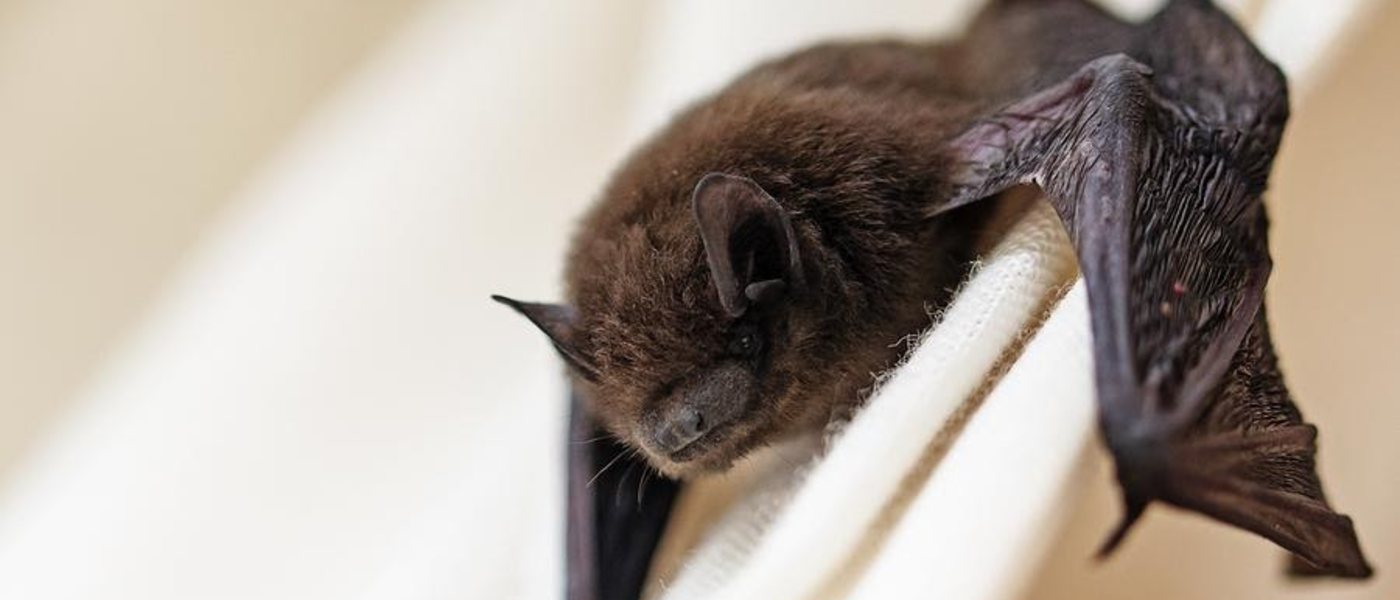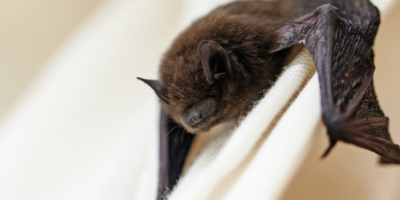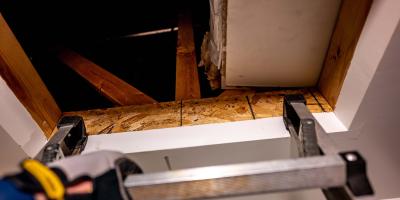How to Get a Wayward Bat Out of the House

Bats are incredibly beneficial animals to the environment — as long as that environment isn’t your house. Bats can’t help pollinate crops or distribute seeds — crucial tasks bats perform in the wild — when they’re roosting upstairs in your attic.
In your home, a bat transforms from beneficial species into a major health hazard, without even shapeshifting, no less.
Making matters worse, many species of bat are threatened or endangered. This is why finding bats dwelling inside your home presents such a problem. On the one hand, you need to get them out for your own safety and that of your family.
But you also don’t want to upset nature’s delicate balance (and in some jurisdictions, may be compelled by law not to harm any bats you find).
If you find yourself with an uninvited flying mammal houseguest, it’s possible to remove the bat safely and humanely yourself. Let’s go over how to do it.
First, Make Sure It’s a One-Off
The problem with bats (as with any animal inside the home, honestly) is that when you see one, there’s often many more hiding elsewhere. Most of the time someone encounters a bat in their home, it’s in late July or August. Why? Because this is the time of year when baby bats (also called pups) are learning to fly.
When it’s time for baby bats to start flight lessons, mama bat isn’t playing around — she literally nudges them out of the roost, and from there it’s drop and fly…or just drop. Since all bats must drop into flight (they can’t take off from the ground, unlike birds), they must start their flight diving towards the lower level of your home in order to catch the wind under their wings and (hopefully) take to the air. Unfortunately for us and them, this means that all it takes is one wrong turn for a baby bat to find themselves fluttering around your home rather than towards the sky as they intended.
That also means, if you’ve got a baby bat in your home, you probably have a mama bat (and more) in your attic. So, you’ll want to check your attic or loft space to make sure.
How to Get a Bat Out of Your Home
Bats can have rabies, so it’s best to let a pro handle them whenever possible. But when time is of the essence and you can’t wait for an exterminator, some may opt to take care of it themselves. Luckily, if you follow these steps, you can greatly reduce your risk of harming yourself or the bat.
The easiest and safest approach would be to encourage the bat to exit on its own. Simply confine it to the room its in by closing all doors to the rest of the house, and simply open any doors and windows/screens that would allow it back outside. Then just turn off the lights and give it space to find its way out.
If the above scenario isn’t possible due to a lack of outside access or inability to close off the rest of the home, it’s time to put on some thick gloves and roll up (or rather, down!) your sleeves. Grab an old shoebox, wait for the animal to settle in one spot, and approach slowly and quietly. You should be able to sneak the open box over the bat, slip a piece of thin cardboard between it and the wall, and carry it outside without causing it much of a fuss. Assuming that there is no need to test it for rabies, you can open the box on its side to allow the bat to crawl unto a tree limb or second-story porch, somewhere that permits it to drop into flight (remember that it cannot take off from the ground).
Remember that, while it’s rare, rabies is a serious disease that can be carried and spread by bats. If anyone (human or pet) was potentially bitten or scratched, you’ll want to save the bat for testing and call your local health department immediately, just to be safe.
For Any More Than One, Call the Pros
While removing a single bat can often be done by an individual or two with the right tools and know-how, removing a full bat colony from the attic absolutely requires a wildlife professional. Constructing an effective bat exclusion (i.e. the method of getting them out) that’s safe for both bats and humans — as well as the house itself — is not an amateur DIY project.
Remember, where there’s one bat, there is almost always a colony behind (or rather, just above) it. That’s why we urge anyone who bumps into a bat in their home to schedule a free inspection to get things checked out.



